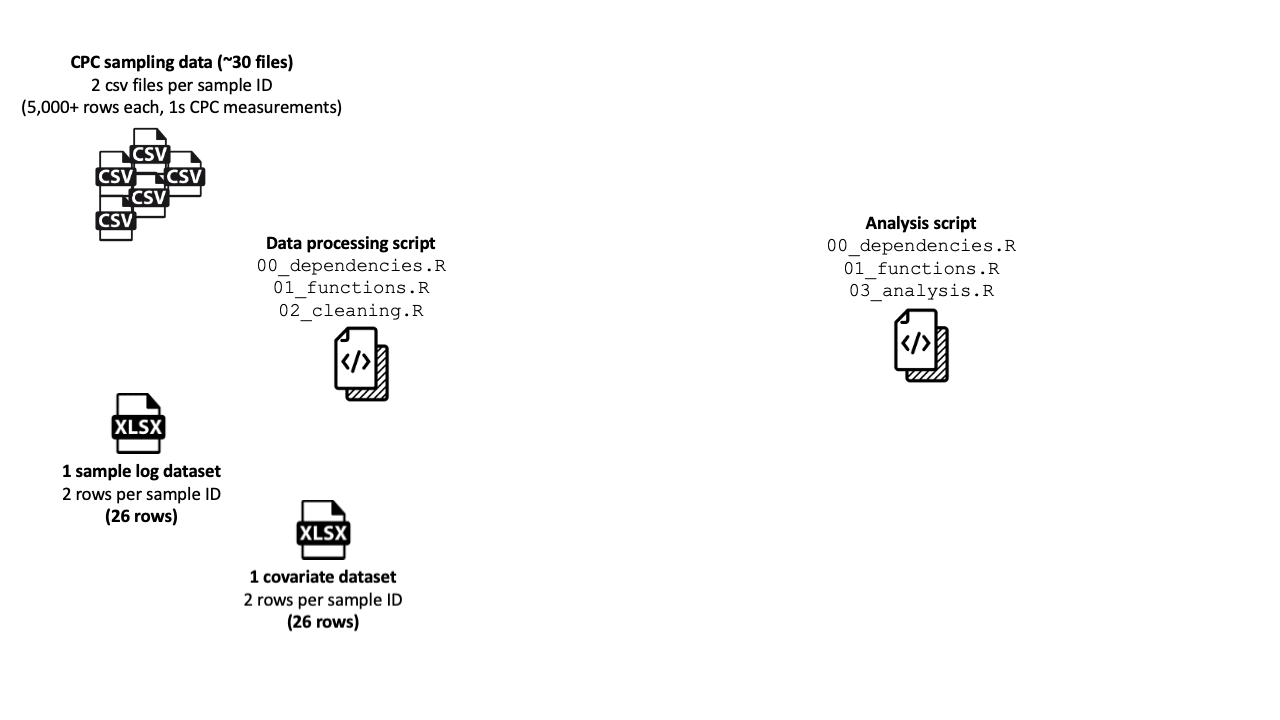Data Analysis From Start to Finish
ID 529: Data Management and Analytic Workflows in R
Dean Marengi | Wednesday, January 22nd, 2025
Context for what we’ll be discussing
- To walk through the methods implemented with R to go from raw data to data analysis for an exposure assessment project for “EH 263 Analytical Methods and Exposure Assessment”.
- The project aimed to explore the additional contribution of food truck exhaust to Ultra-fine Particle Concentrations in ambient air, above and beyond background levels.
Methods implemented that we have discussed
- Project based workflows
- Reading in data with
readrandreadxl - Conditionals and for loops
- Writing functions
- Data manipulation using
dplyr - Combining (linking) datasets
- Text processing using
stringr - Working with factors, dates, and times using
lubridate - Data visualizations using
ggplot - Functional programming for efficient file imports using
purrr
Why food trucks?
- UFPs have an aerodynamic diameter of 0.1 µm or less (Li et al., 2016; Moreno-Ríos et al., 2022)
- Diesel exhaust substantially contributes to UFP concentrations
- Food trucks often use diesel or gas generators to power truck operations
- These generators are typically run for many hours (i.e., for the duration of time trucks are on-site)
Existing regulations
- To improve the ambient air quality of air pollutants from idling vehicles, the Massachusetts Anti-Idling Law limits engine idling up to 5 minutes (MA Department of Environmental Protection, n.d.).
- However, there are no restrictions in the Mass. Anti-Idling Law, or other laws, that aim to constrain air-pollution emissions from food truck generators)
Hypotheses
- UFP concentrations will be higher when food trucks are present compared with when they are not present
- UFP measurements at a 5-meter distance from food trucks will be associated with higher UFP concentrations when compared with measurements taken at a 10-meter distance
Study design overview

Figure A: Sampling site configuration at the HSCP. Condensation Particle Counter (CPC) placement in relation to the HSCP outdoor dining area and food truck parking area is shown in red.
Figure B: Approximate timeline for the sampling protocol. Data collection began at approximately 10:00 AM and ended at approximately 11:30 AM. Food truck arrival times varied, but generally occurred between 10:15 and 11:00 AM.
Getting started with data collection
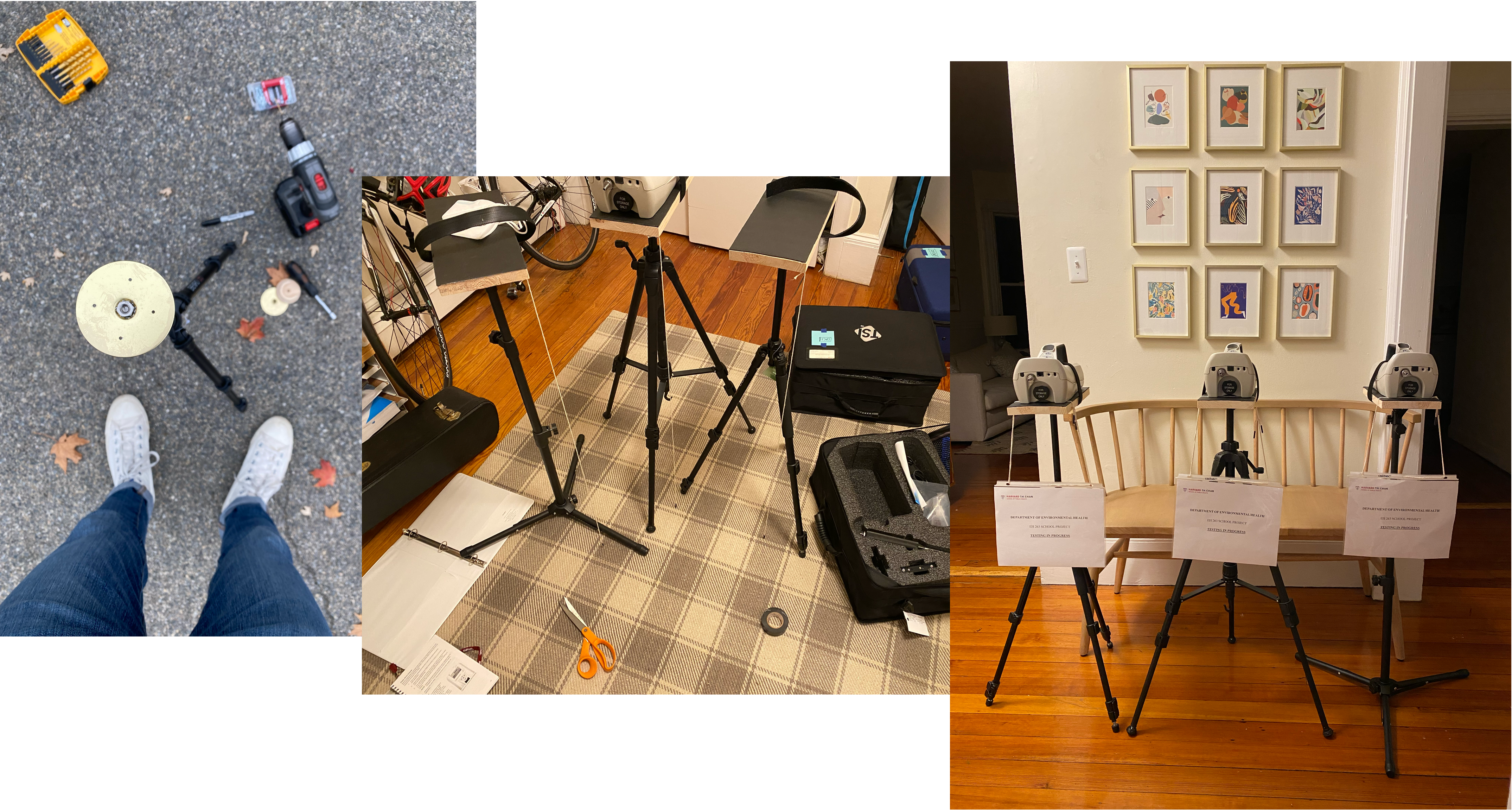
Getting started with data collection
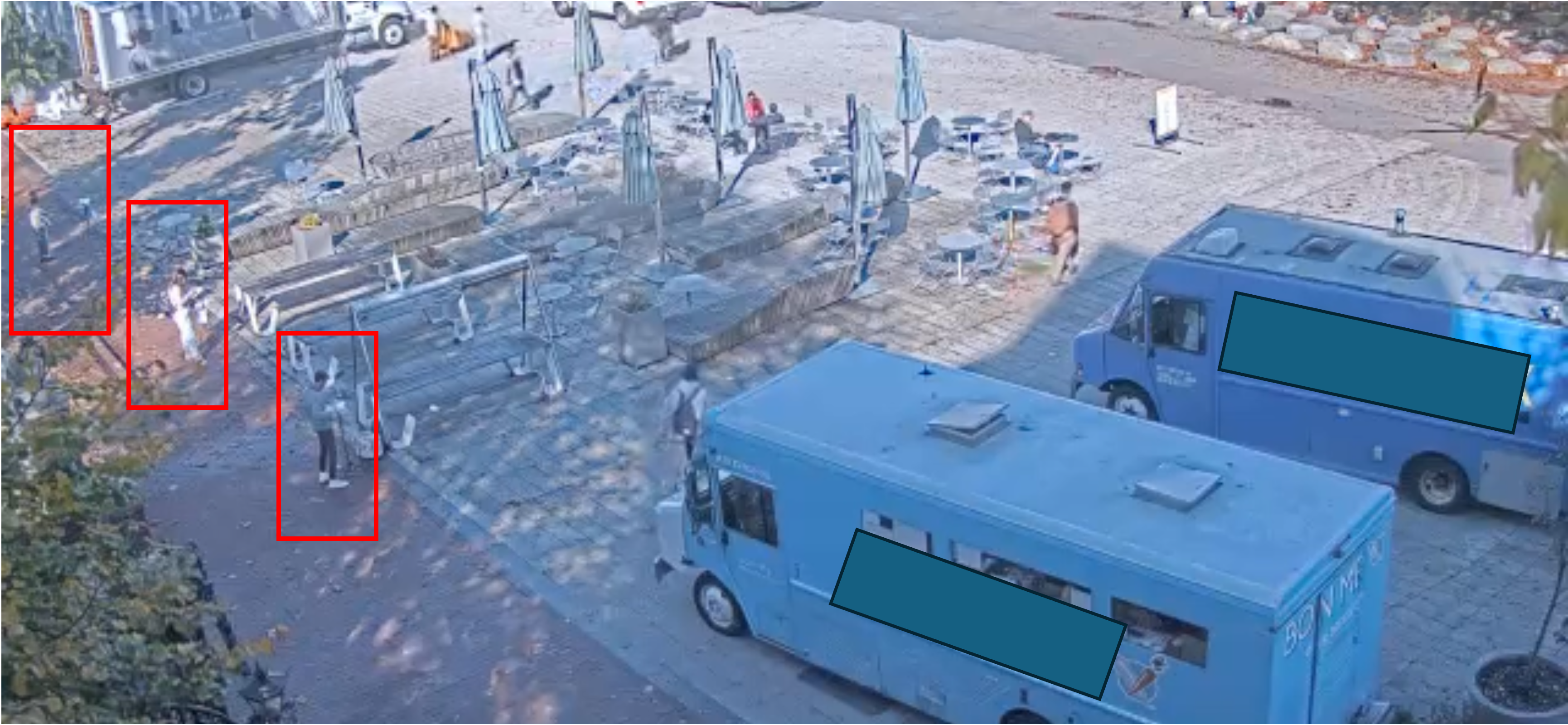
Data processing problems to solve
Data pipeline overview

Part 1: Compiling and organizing UFP data
- Compile 34 raw data files that were exported from CPC device software
- For each file (Part A):
- Standardize the file structure
- Derive new variables based on existing columns, and metadata embedded in file names
- A sample ID variable
- File name
- Several date/time variables
- An indicator for which CPC device collected the measurements
- An indicator for which distance the measurements were collected at (5- versus 10-meter)
- Re-organize the columns
CPC raw data example file (n=34, each with 5000+ rows)
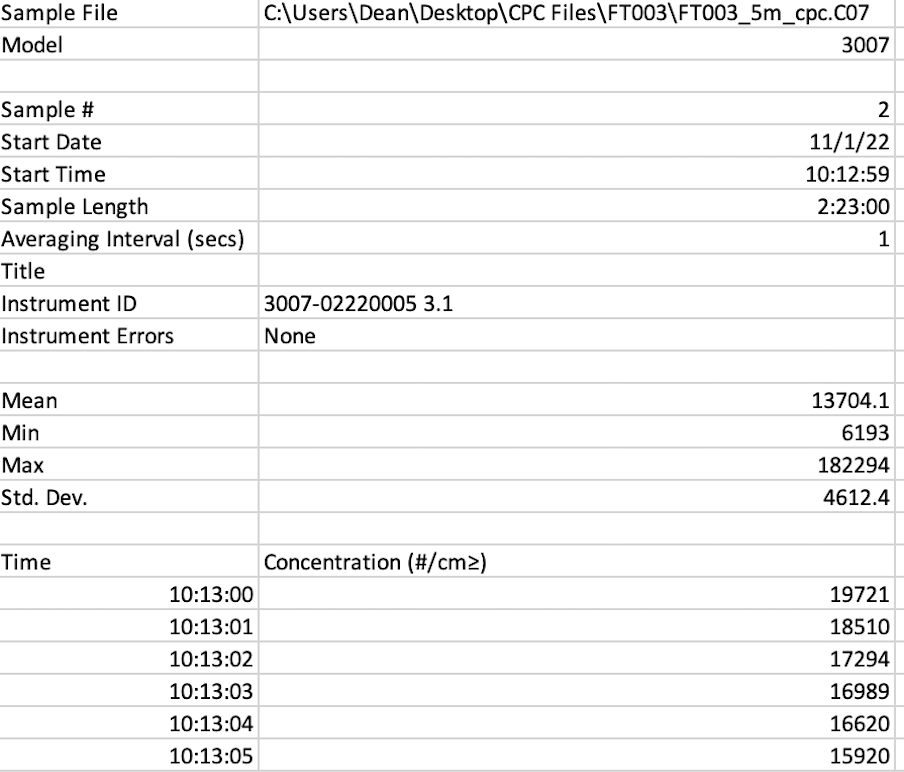
Part 1: Compiling and organizing UFP data (cont.)
- For each file (Part B):
- Reference a sample log to “look up” truck arrival times for a given sample ID (e.g., FT001, FT002, etc.)
- Use this truck arrival time to create an indicator for whether a one-second measurement was taken before or after truck arrival (i.e., Pre-truck versus Post-truck)
- Note: This is because the CPCs were continuously collecting measurements for the whole measurement period (all pre- and post-truck arrival measurements were contained within a single file)
Sample log example file (n=1)
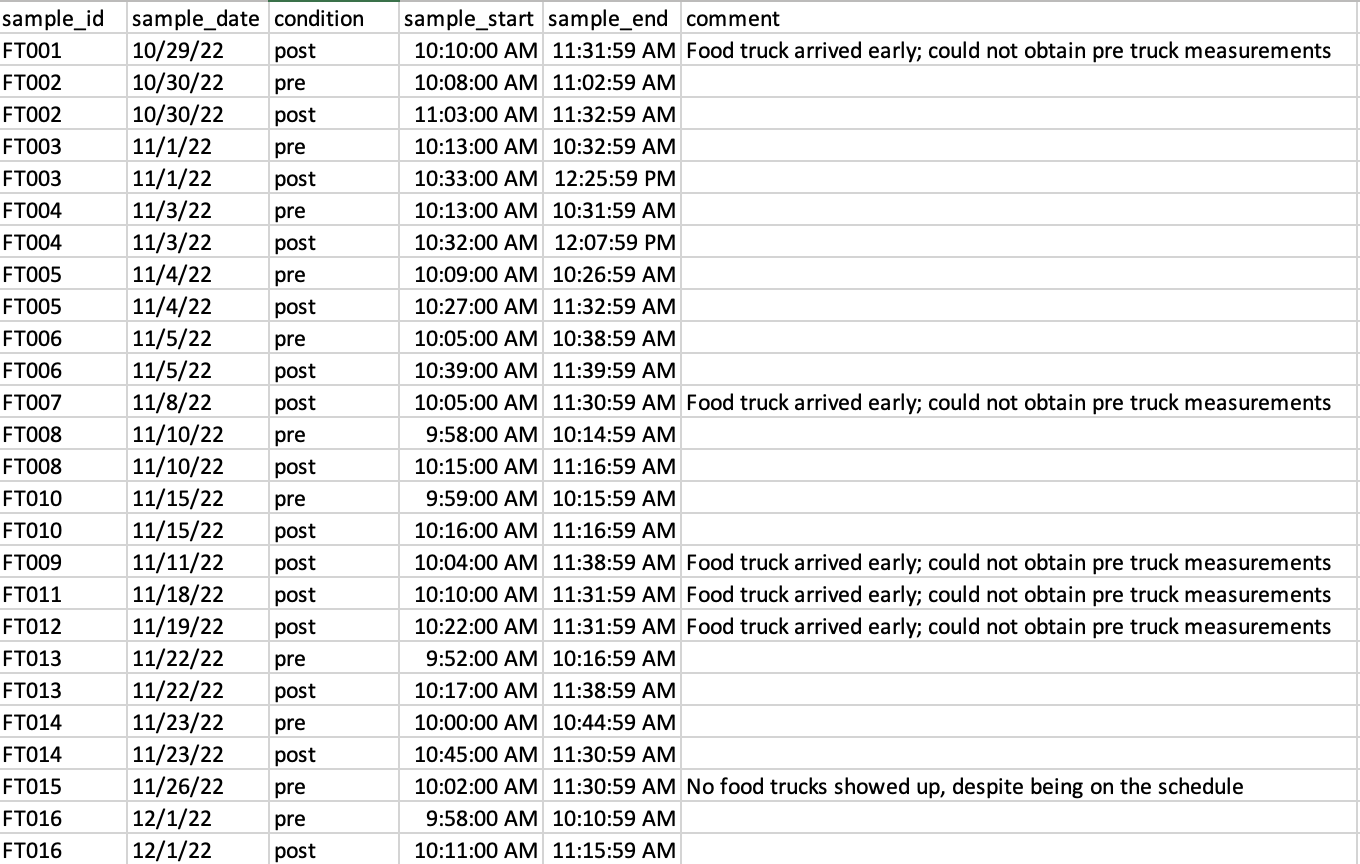
Part 2: Joining measurement and sample log data with covariate data
- The Pre- versus Post-truck indicator in Part 1 allows us to join data from a third file containing covariate data
- The covariate data file contained:
- Sample ID
- A pre- versus post-truck indicator variable
- Meteorological parameters (e.g., temperature (F), % relative humidity, wind speed (mph), etc.
Covariate data example file (n=1)
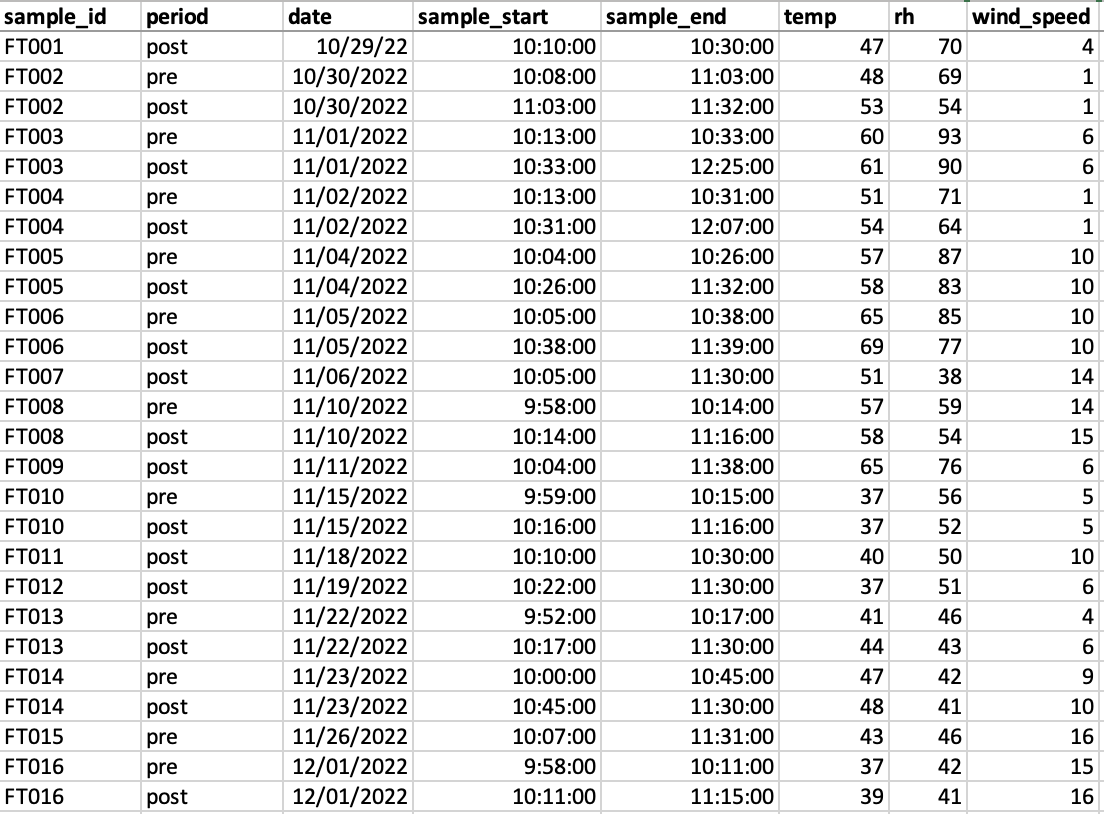
Data pipeline overview
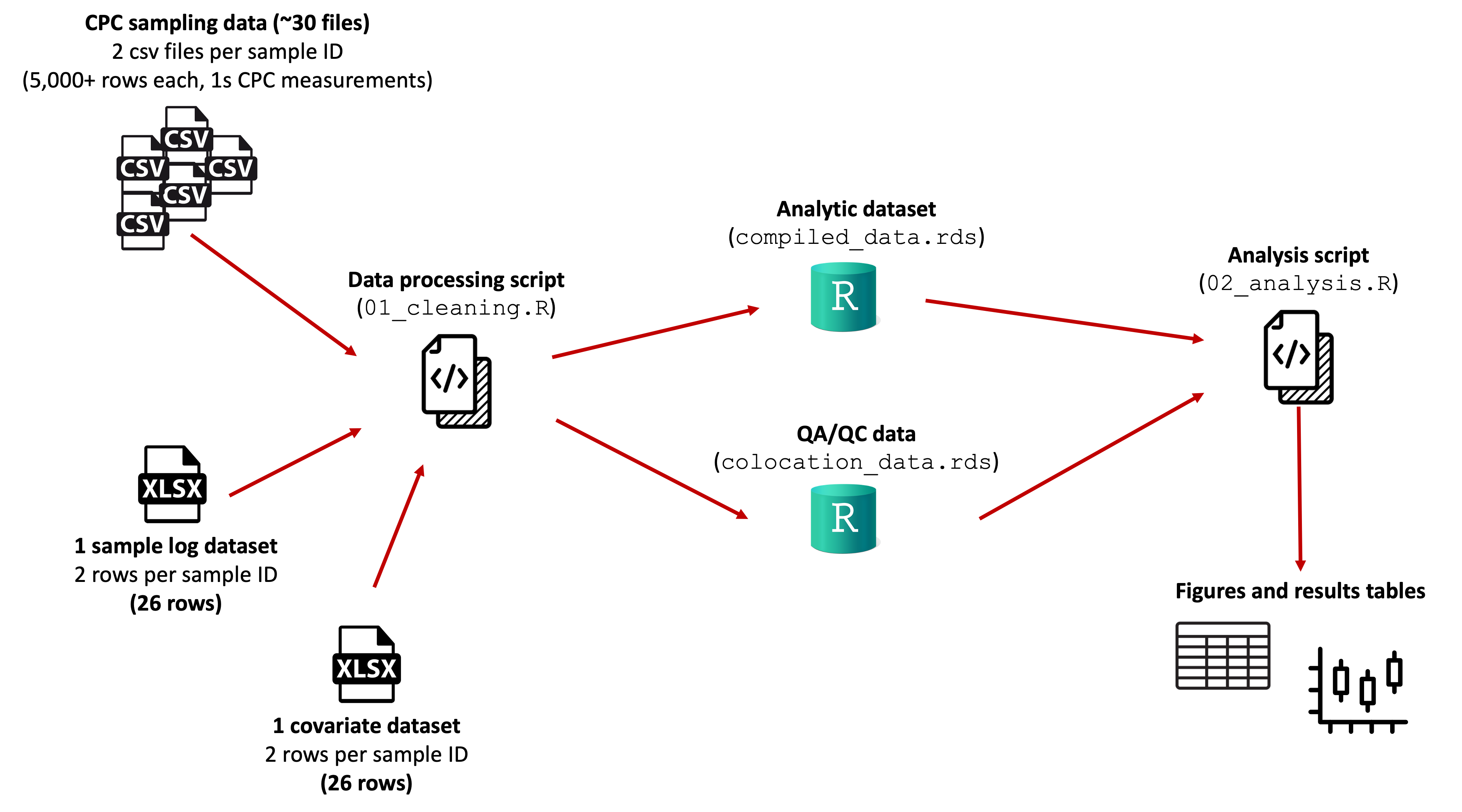
Data pipeline overview
